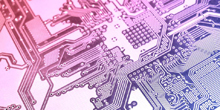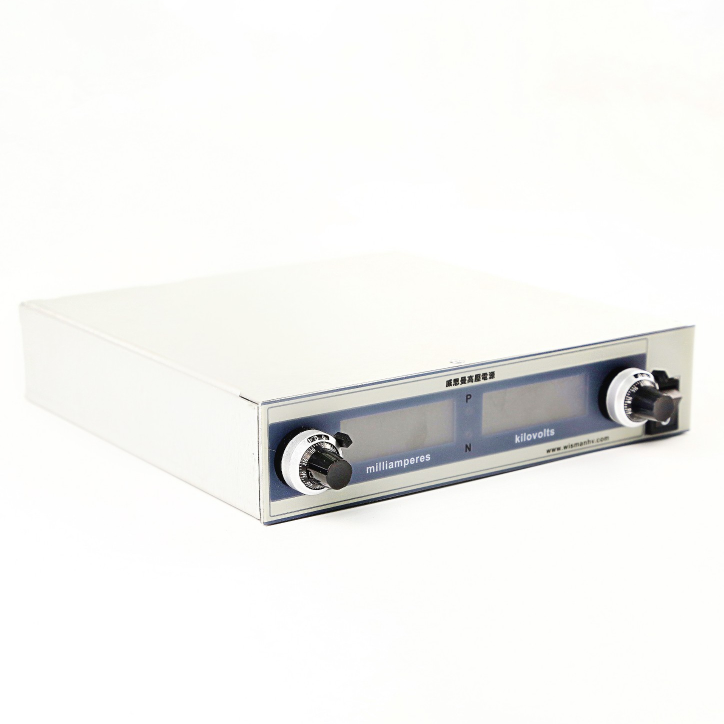Electrostatic chuck is a fixture that uses the principle of electrostatic adsorption to clamp and fix the adsorbed material, suitable for vacuum and plasma environment, the main function is to adsorb ultra-clean sheet (such as silicon), and to keep the adsorption flat, can inhibit the deformation of the adsorption in the process, but also to adjust the temperature of the adsorption.
Structure and principle of electrostatic chuck
1. Types: Basically divided into two categories. Namely, the Coulomb class and the Johnsen-Rahbek class. Both types of suckers rely on electrostatic charges to attract the same sex to fix the silicon wafer; There is a layer of dielectric on the surface where the sucker contacts the wafer. Most of the suckers made of ceramic are Coulomb, and the suckers made of mixed dielectric are Johnsen-Rahbek.
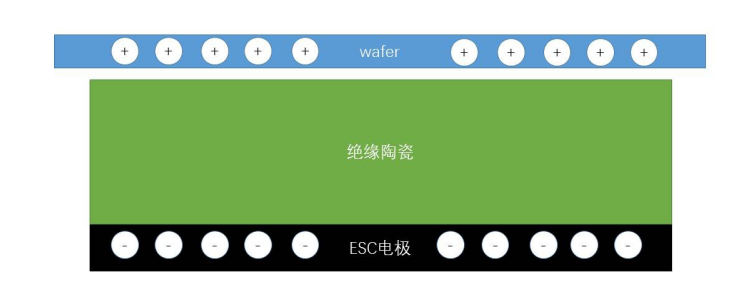
Coulomb
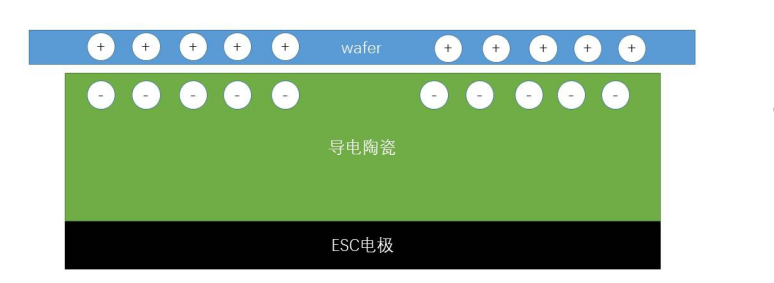
Johnsen-Rahbek
2. How it works
Practical applications of ESC are divided into unipolar and bipolar (generally with bias voltage).
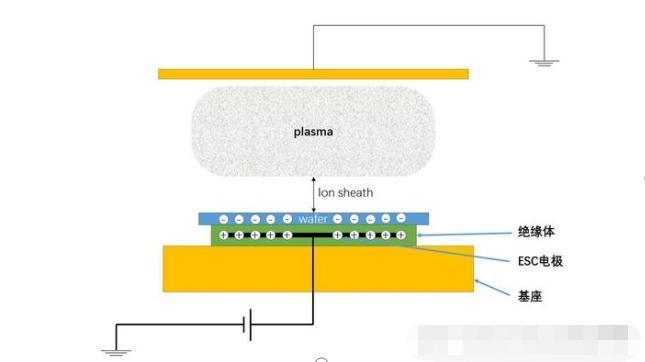
unipolarity
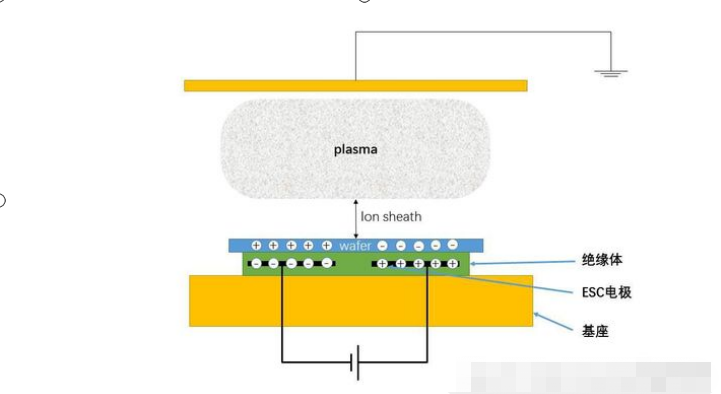
bipolar
In the dielectric layer of the sucker is embedded with a direct current electrode (the size of the silicon wafer, slightly smaller) to connect to the high voltage (low current) DC power supply.
(1) The principle of aspiration
In the absence of plasma, when the DC electrode is connected to a high voltage (low current) DC power supply, the
surface of the dielectric will produce a polarized charge (for Coulomb suction cups). If it is a hot-back type suction
cup, the dielectric surface not only has a polarized charge, but also a large part of the free charge, because the
dielectric of the JR suction cup has a certain conductivity. The surface charge of the dielectric will produce an
electric field, which will further produce a polarized charge on the surface of the wafer placed on the suction cup
(it may also include part of the free charge, depending on what kind of wafer and what film is on the surface of the
wafer, conductive or insulating), and the charge distributed on the back of the wafer is the opposite polarity of the
charge distributed on the suction cup, so that the wafer is absorbed by the suction cup.
(2) Release principle
a. In the absence of plasma, if the high voltage (low current) DC power supply is switched off to the direct current
electrode (embedded in the dielectric of the sucker), if the charge distributed on the back of the chip and the
charge distributed on the sucker are polarized charges, then the chip is released, that is, the suction automatically
disappears.
b. In the absence of plasma, if part of the charge distributed on the back of the wafer and the charge distributed onthe suction cup are free charges, even if the high voltage (low current) DC power supply that is switched on to the
direct current electrode (embedded in the dielectric of the suction cup) is turned off, the wafer will not be
completely released, that is, there is still a certain electrostatic suction due to the residual charge. In this case, a
reverse static voltage is usually required to force out the residual charge before the chip can be released.
c. In the presence of plasma, due to self DC bias, even if the high voltage (low current) DC power supply that is
connected to the DC electrode (embedded in the dielectric of the suction cup) is turned off, that is, the chip will still
be attracted by the suction cup · when the suction cup voltage is zero. This is because the DC self-bias plays the
role of the suction cup voltage. In some reaction cavities (not of the etching machine), there is even no need to use
the static voltage of the high voltage (low current) DC power supply, and completely relying on the DC self-bias is
enough to complete the task of absorbing the chip. Therefore, after processing the chip, you need a release menu
(dechucking recipe) to release the chip, otherwise you cannot remove the chip from the reaction chamber.
3. The ESC feature
In general, the suction force of the Jeroback type sucker is greater than that of the Coulomb type. In etching
machines with high chip temperature control requirements, more and more use of the setback type suction cups,
the dielectric is usually a mixed aluminum nitride ceramic material. Aluminum nitride has excellent thermal
conductivity.
In the process of wafer processing, the reason why the wafer is firmly sucked to the surface of the sucker is mainly
to increase the heat transfer between the wafer and the sucker. In addition, the helium gas between the back of
the wafer and the surface of the suction cup is an important medium for heat transfer.
In the sucker, in addition to the direct current electrode, there are radio frequency electrodes. The RF electrode is
used to provide the RF bias power required during wafer processing. In some cases, the ESC is connected to the
electrode through a filter.
In addition, the suction cups also need coolant circulation channels and helium airways. Its design requires special
care and detail. Moreover, its design is restricted by other aspects, such as the volume cannot be too large,
otherwise it will block or reduce the exhaust speed of the reaction chamber.
Wisman provides power for a full range of electronic chucks, with functions
including:
High voltage bipolar output (positive/negative),
Output polarity reversal function to facilitate wafer adsorption/desorption,
The ability to detect wafer status through capacitance measurement (Coulomb chuck) or current measurement
(JR chuck),
Analog and digital interfaces for easy integration into various systems,
High reliability, no mechanical relay design,
Wisman offers a wide range of design theory knowledge and manufacturing capabilities, so it can offer a wide
range of customized products to meet a wide range of requirements. Depending on the application, features
include options such as high voltage bias/offset and RF filtering.



